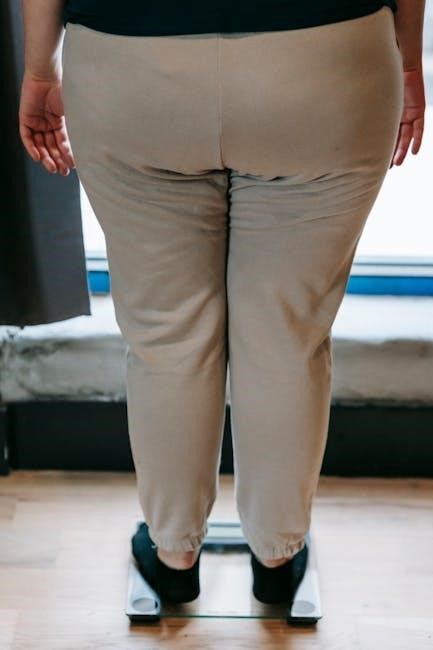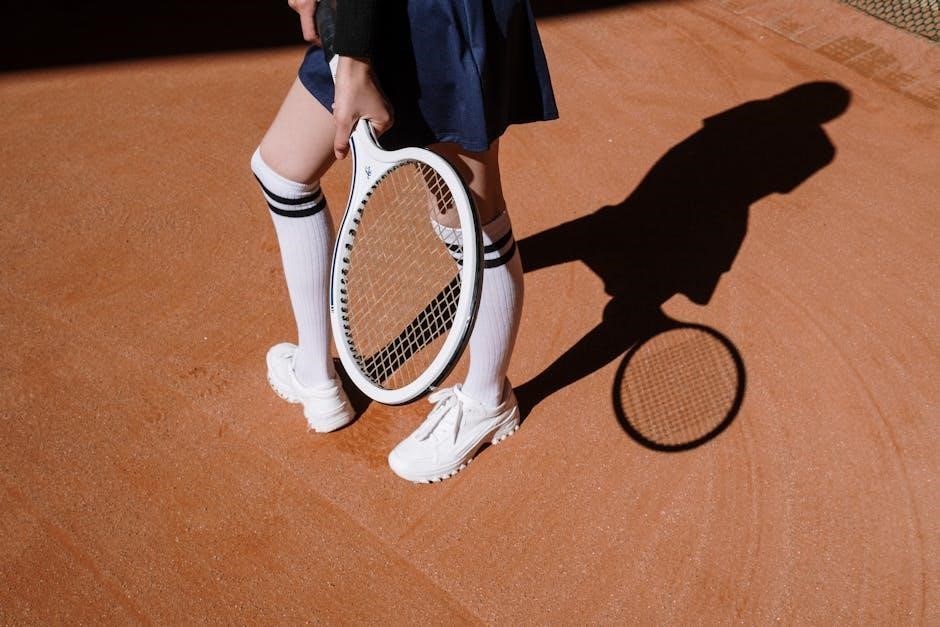sock sizing guide
A comprehensive guide helping you choose the right fit, ensuring comfort and style. Learn how to measure, convert sizes, and understand factors affecting sock fit for the best experience.
Why Sock Size Matters
Sock size is crucial for comfort, health, and performance. Proper fit prevents issues like blisters, discomfort, and restricted circulation. Ill-fitting socks can lead to foot problems and affect shoe fit. Different activities require specific sock sizes for optimal comfort and support. Fabric type and stretch also influence fit, with thicker materials needing slightly larger sizes. Additionally, inconsistent sizing across brands can make selecting the right size challenging. Accurate sizing ensures better movement and reduces the risk of foot fatigue, making it essential for both everyday wear and athletic activities.
Key Factors in Determining Sock Size
Foot length, shoe size, and fabric type are primary factors in determining sock size. Foot length is measured in centimeters or inches, while shoe size often correlates with sock size. Fabric stretch and thickness influence fit, with materials like cotton, wool, and synthetic blends requiring different considerations. Weight and activity level also play a role, as athletic socks may need a snugger fit. Gender-specific sizing varies, with men’s, women’s, and kids’ sizes differing significantly. Understanding these factors helps in selecting the perfect fit for comfort and performance.

Understanding Sock Sizes
Sock sizes vary by region, with US, UK, and EU using different scales. They are based on foot length, often correlating with shoe sizes for accuracy and comfort.
How Sock Sizes Are Measured
Sock sizes are determined by foot length, typically measured in centimeters or inches. Manufacturers use standardized charts, correlating foot length to specific size ranges. For example, a 25cm foot length might correspond to a size medium in EU sizing. Shoe size is also a reference, as it often aligns with sock size. Brands may vary slightly, but most adhere to regional standards like US, UK, or EU sizing systems to ensure a consistent fit across different products and collections.
Differences Between Men’s, Women’s, and Kids’ Sock Sizes
Mens’, womens’, and kids’ sock sizes vary based on foot length and width. Mens’ socks typically range from size 6-15 (US), corresponding to larger foot lengths. Womens’ sizes are smaller, usually 4-11 (US). Kids’ sizes are further divided into toddler and youth, often labeled with age ranges. While men’s socks may offer more structural support, women’s designs often emphasize style and fit. Kids’ socks focus on comfort and growth allowances. Each category uses distinct sizing charts to cater to specific needs and preferences, ensuring optimal fit across different demographics and lifestyles.


Regional Sock Size Charts
Explore size charts for US, UK, and EU regions, ensuring accurate fit based on local sizing standards and measurement systems for men, women, and kids.
US Sock Size Chart
The US sock size chart ranges from 5 to 15 for men and 4 to 13 for women. Sizes correlate to shoe sizes, ensuring a snug fit. For men, sizes 5-8 fit small-medium feet, while 12-15 suit larger feet. Women’s sizes 4-6 are small, 6-10 medium, and 10-13 large. Kids’ sizes vary, with 13C-3Y for toddlers and 5Y-7Y for older children. This system helps match sock sizes to foot lengths, providing comfort and preventing blisters. Always check the chart for accurate sizing, as brands may slightly differ in their measurements.
UK Sock Size Chart
The UK sock size chart provides a clear guide for selecting the right fit based on foot length. Men’s sizes range from 2-5 (small) to 11-14.5 (extra-large), while women’s sizes range from 2-5 (small) to 8-11 (large). The chart is designed to ensure comfort and style, with sizes corresponding to standard UK shoe sizes. It helps consumers choose the perfect fit for everyday wear, sports, or formal occasions. By referencing the UK sock size chart, shoppers can easily determine their size, ensuring a comfortable and snug fit for any sock type.
EU Sock Size Chart
The EU sock size chart offers a standardized system based on European shoe sizes, ranging from 35 to 48. Each size corresponds to specific foot lengths, ensuring a precise fit. This chart is widely used across Europe and helps consumers choose socks that match their shoe size. By understanding the EU sock size chart, shoppers can easily find the right fit for comfort and style. It serves as a reliable guide for selecting socks that align with European sizing standards, making it easier to purchase socks online or in-store with confidence.

Sock Size Conversion Charts
These charts help bridge regional sizing differences, enabling easy conversion between US, UK, and EU sizes for seamless international shopping and ensuring the perfect fit every time.
US to UK Sock Size Conversion
Converting US to UK sock sizes ensures a perfect fit. For men, US sizes 6-8 correspond to UK 4-6.5, while US 8.5-11 matches UK 7-9.5. Women’s sizes differ slightly; US 4-6 aligns with UK 2-4, and US 6.5-8.5 corresponds to UK 5-7. Using these conversions, shoppers can seamlessly switch between regions, ensuring accuracy and comfort. This guide simplifies the process, making international purchases hassle-free. Accurate conversions are key to avoiding ill-fitting socks and ensuring a comfortable, stylish experience. Always refer to specific charts for precise measurements to guarantee the best fit possible.
EU to UK Sock Size Conversion
Converting EU to UK sock sizes is straightforward once you understand the scale. EU sizes are based on foot length in centimeters, while UK sizes use a separate numbering system. For men, EU sizes 35-38 correspond to UK 2.5-4.5, EU 39-42 matches UK 5-7, and EU 43-46 aligns with UK 7.5-9.5. For women, EU 35-38 equals UK 2-4, and EU 39-42 matches UK 5-7. This guide ensures accurate conversions, helping shoppers avoid sizing mismatches. By referencing these charts, you can easily transition between EU and UK sizes for a perfect fit every time, whether shopping domestically or internationally.
US to EU Sock Size Conversion
Understanding US to EU sock size conversion is essential for ensuring a perfect fit. US men’s sizes range from 3-5.5 (equivalent to EU 35-38) up to 12-15 (EU 45-48). Women’s US sizes start at 4-6 (EU 35-37) and go up to 10-13 (EU 41-44). This guide helps bridge regional sizing differences, ensuring accurate conversions. By aligning US and EU sizes, shoppers can confidently purchase socks that match their foot length, whether buying domestically or internationally. Accurate conversions are crucial for comfort and proper fit, making this guide indispensable for anyone navigating international sock sizing systems.

Factors Affecting Sock Fit
Foot length, shoe size, fabric type, and stretch influence sock fit. Proper measurement ensures comfort and prevents issues like blisters or tightness during wear.
Foot Length and Sock Size
Foot length is the primary factor in determining sock size. Measurements in centimeters or inches are used to match the right size, ensuring a snug, comfortable fit. Proper alignment with shoe size charts helps avoid discomfort. Accuracy in measuring is crucial for optimal fit, with regional sizing varying slightly. Always refer to specific charts for precise sizing to ensure your socks feel great all day long.
Shoe Size Correlation
Sock sizes often align with shoe sizes, as both are based on foot length. However, variations exist due to factors like fabric stretch and sock thickness. For instance, a US men’s shoe size 10 typically corresponds to a sock size of 10-12. Women’s shoe sizes 6-8 usually match sock sizes 6-10. Kids’ sizes also follow this pattern, ensuring consistent fit. Always check specific conversion charts to ensure accuracy, as slight differences can occur between brands and regions. Proper correlation ensures comfort and prevents issues like tightness or looseness.
Fabric Type and Stretch
Fabric type and stretch significantly impact sock fit. Thicker materials like wool or fleece offer less stretch, requiring a snug fit to prevent slippage. Thinner fabrics, such as cotton or synthetic blends, provide more elasticity, allowing for a looser fit. Socks with high elastane content, like athletic styles, offer superior stretch for active use. Understanding fabric characteristics ensures the right size selection, enhancing comfort and performance. Always consider fabric type when choosing sock size, as it influences how the sock conforms to your foot and stays in place throughout the day.

Common Sock Sizing Challenges
Common issues include inconsistent sizing across brands, difficulty in determining sizes for gifts, and challenges in converting sizes between regions like US, UK, and EU standards accurately.
Inconsistent Sizing Across Brands
One major challenge is inconsistent sizing across brands. Despite similar labels, sock sizes can vary significantly due to differing measurement methods and material stretch. For example, a size 9 in one brand might fit like an 8.5 in another. This inconsistency makes it difficult for consumers to rely solely on size labels, especially when shopping online. Brands often have unique fits based on their target audience or specific styles, further complicating the selection process. Always check the brand’s size chart to ensure the best fit, as there’s no universal standard across manufacturers.
Determining Size for Gifts
Choosing the perfect sock size for someone else can be tricky. Start by asking the recipient for their size or referring to their shoe size for correlation. Use brand-specific size charts, as sizing varies. If unsure, consider average sizes or opt for a one-size-fits-most option. Fabric stretch and thickness can also affect fit. Many brands offer gift returns or exchanges, making it easier to adjust if needed. To avoid guessing, check reviews or sizing tips from other customers. A well-fitting gift ensures comfort and shows thoughtfulness, making it a practical and appreciated present.
This guide provides a comprehensive overview of sock sizing, helping you make informed choices. By understanding measurements, conversions, and fit factors, you’ll confidently select the perfect socks every time.
Final Tips for the Best Fit

For optimal comfort, measure your foot length accurately and consult size charts. Consider shoe size correlation and fabric stretch. Use regional conversion charts to ensure accuracy. Try socks on if possible, and check reviews for fit feedback. Prioritize materials that match your activity level. Don’t hesitate to reach out to brands for sizing guidance. Remember, proper fit enhances comfort and durability, making every step feel great. By following these tips, you’ll confidently find your perfect pair, tailored to your needs and preferences.


